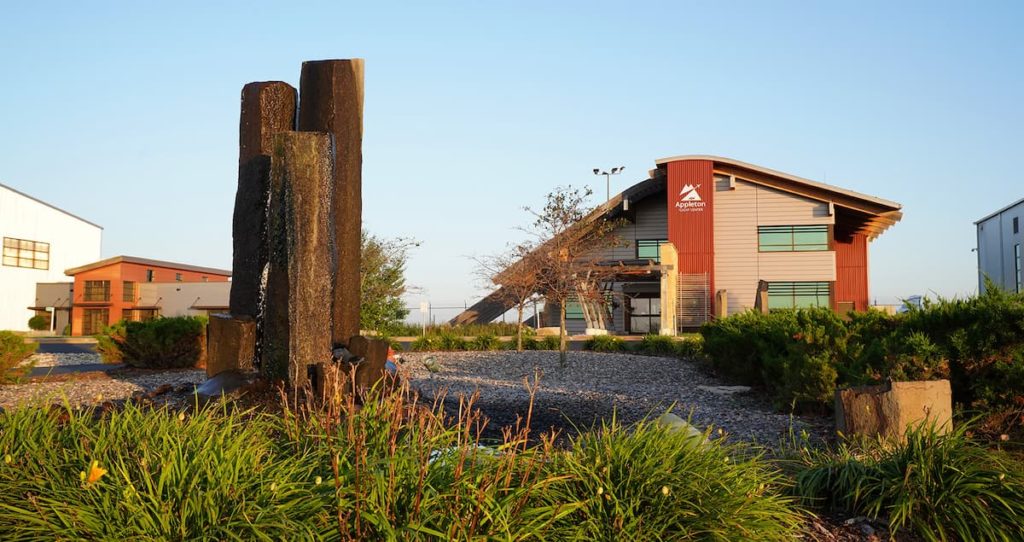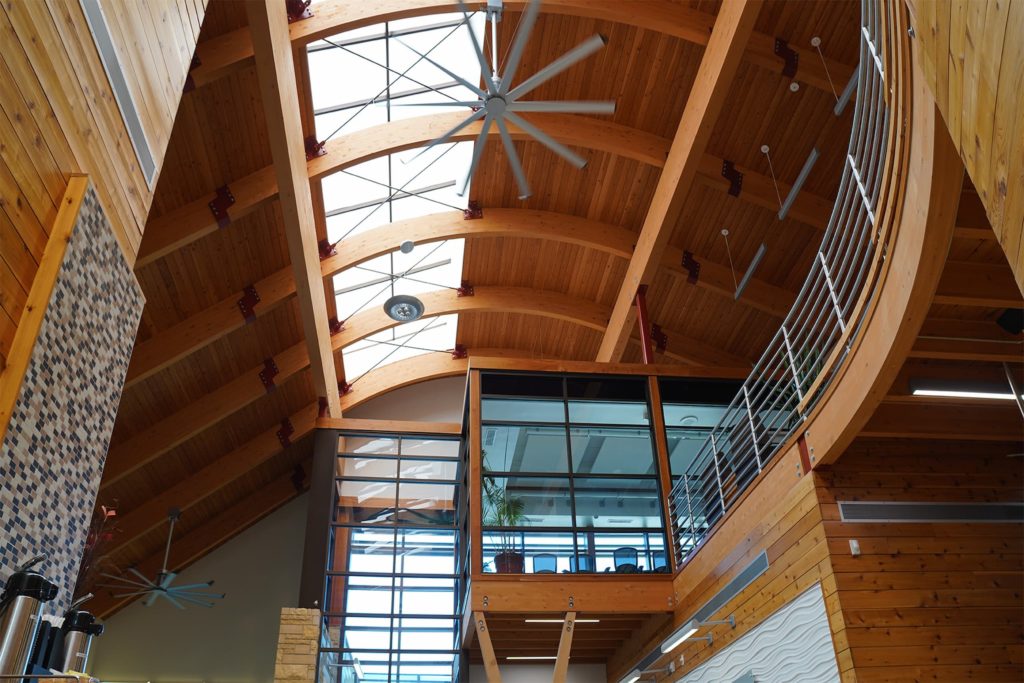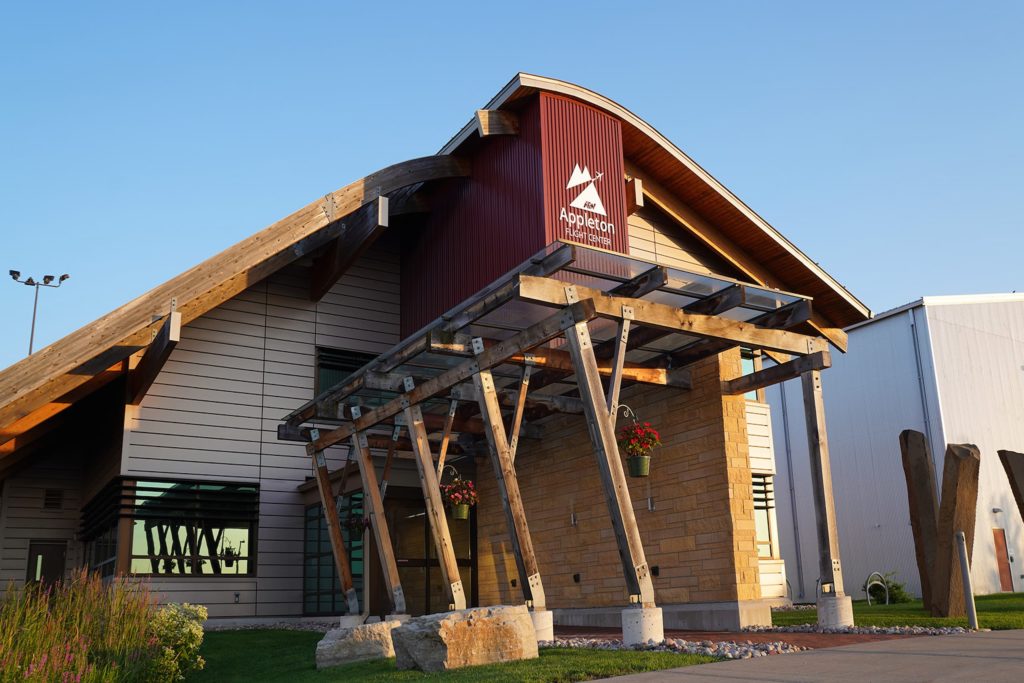
Sustainability
General Aviation FBO Terminal

General Aviation FBO Terminal
In 2011, Outagamie County Regional Airport (ATW) was one of 10 airports selected nationally by the Federal Aviation Administration (FAA) to participate in an initial Sustainable Master Plan Pilot Program. This unique framework for the master plan process factored in focus areas as they relate to the economic, environmental and social impact of the airport. Mead & Hunt, a national planning, architecture and engineering consulting firm was contracted to provide the professional services.
Lessons learned from the various completed master plans have been submitted to the FAA to provide insight into the process for the next round of Pilot Program airports. This next round consists of 13 participants and is currently underway.
The Platinum Flight Center GA Terminal is currently completing the LEED Certification process.
Unique to all of the program participants was ATW’s desire to propose and develop a demonstration project that could provide a real life case study. Using the planning goals set forth in the Sustainable Master Plan, ATW moved forward in establishing a general aviation (GA) campus to the south of the commercial air service passenger terminal. Taking advantage of existing infrastructure, the campus includes a Fixed Based Operator (FBO) terminal, a corporate hangar and a storage hangar capable of housing multiple corporate jets.

The terminal building is designed to meet the rigorous goals for Net Zero Energy buildings. This means that the building will provide as much renewable energy as it consumes in a calendar year. Specifically, the terminal measures emissions tied to building operation. This is consistent with the mission statement of the airport of being carbon neutral by 2030.
Completed in August 2013, it stands be the nation’s first aviation building to achieve this designation. Twelve months of performance data such as utility usage will be complied for verification.
The building design includes the following energy efficiency measures:
The GA terminal building has a target of 80% total energy savings, including the offset provided by on-site renewable energy systems. The remainder of the building’s energy needs would be purchased from off-site renewable sources, making the south GA terminal a Class D NZEB – Net Zero Emissions Building (NZEB). A Class D NZEB produces or purchases enough emissions-free renewable energy to offset the emissions from all energy used in the building annually.
The GA terminal design is projected to consume approximately 54,000 kilowatt hours (kWh) of electricity annually, which is less than one-third the energy consumption of a similarly-sized, traditionally-designed building. The terminal will produce the majority of its electricity on-site with a 25 kilowatt (kW) solar photovoltaic (PV) panel system.
LEED, or Leadership in Energy & Environmental Design, is transforming the way we think about how our buildings and communities are designed, constructed, maintained and operated across the globe. Comprehensive and flexible, LEED is a green building tool that addresses the entire building lifecycle recognizing best-in-class building strategies.
The U.S. Green Building Council’s LEED green building certification system is the foremost program for the design, construction and operation of green buildings. Over 100,000 projects are currently participating in the LEED rating systems, comprising over 8 billion square feet of construction space in all 50 states and 114 countries. By using less energy, LEED-certified buildings save money for families, businesses and taxpayers; reduce greenhouse gas emissions; and contribute to a healthier environment for residents, workers and the larger community. For more information, visit www.usgbc.org.

Did you know that Appleton Flight Center is a class D Net Zero Energy Building? That means the terminal building produces or purchases enough renewable energy to offset emissions from all of the energy it uses annually.
ATW’s commitment to sustainability drove the Appleton Flight Center initiative of saving 80% of total energy usage over a conventional building. This was completed by using the most efficient building systems, sourcing renewable energy, and purchasing the remainder of the building’s energy needs from green energy sources.